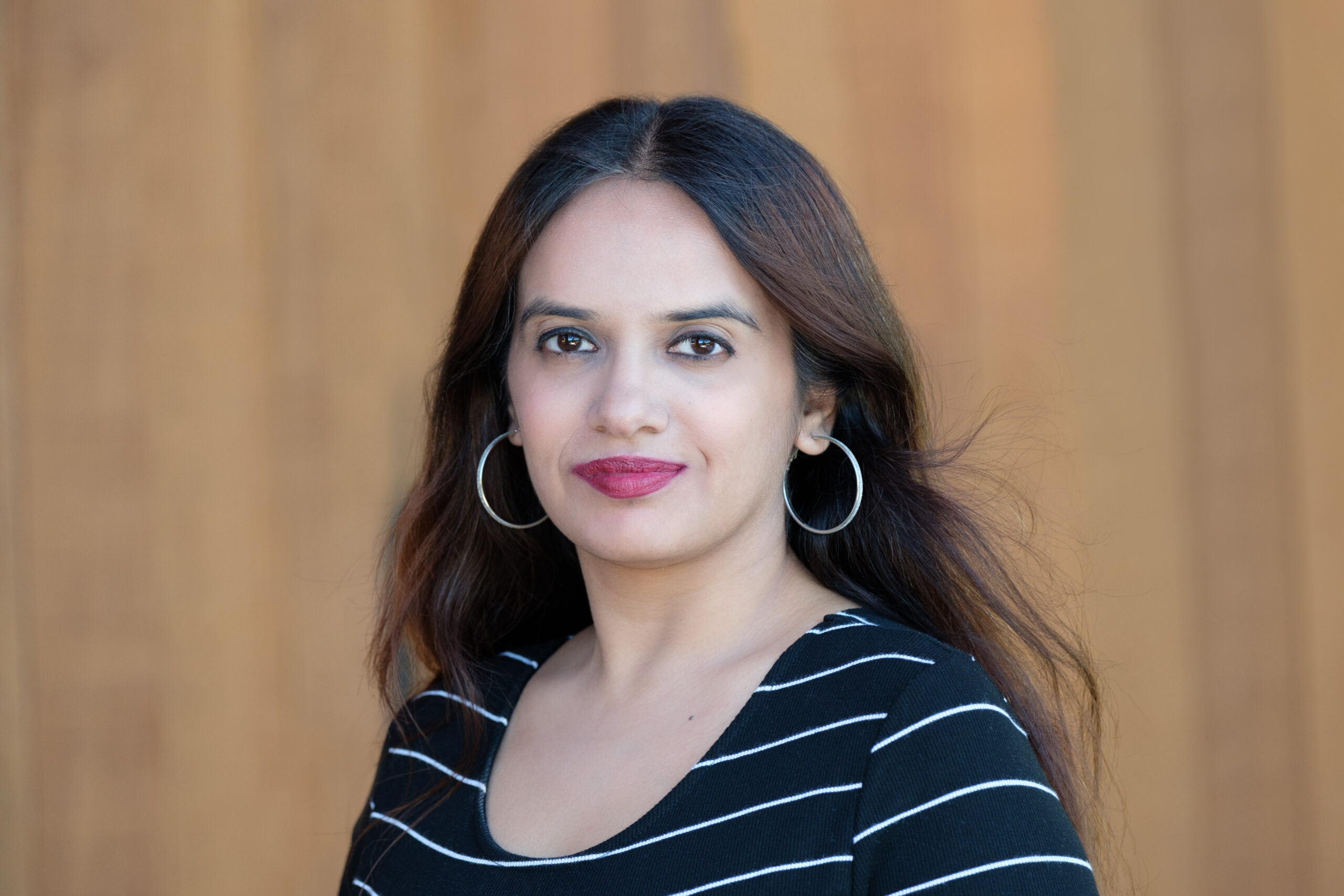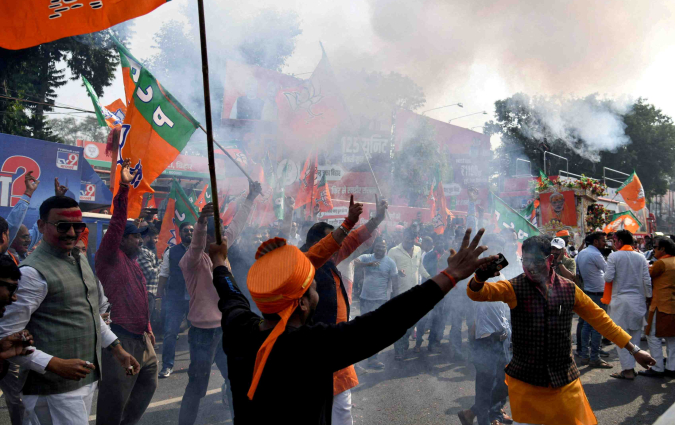This newsroom wants to change how Indian media covers rape and abortion

Japleen Pasricha, founder of Feminism in India.
In 2013, Japleen Pasricha, a former German language lecturer at the prestigious Jawaharlal Nehru University began curating feminist content on her Facebook page. She mostly found content from Western feminist platforms like Bitch Media, Ms Magazine and Feministing. There was little emerging from the Global South.
A year later, she founded Feminism in India, a bilingual feminist media platform, to have more Indian feminist content on the internet written by Indian women for Indian women. “Our mission is to increase the representation of Indian women and marginalised communities on the internet,” she said. “Through our platform, we aim to create a generation of young people that are aware of and educated about feminism and social justice.”
Pasricha explains that one of the aims of the platform is to look at current affairs stories from a gender lens: “Every issue is a woman issue,” she says, stressing they want to get away from only talking about what are conventionally known as "women's issues" such as maternal mortality, menstruation and sexual violence. “Those are crucial, but we want to ensure every story has a strong gender perspective,” she says.
Feminism in India is produced by a team of ten people publishing original pieces in both Hindi and English. They also produce videos, podcasts and social media campaigns. Until 2023, they had philanthropic funding from the Independent and Public Spirited Media Foundation. Since then, they sustain their operation through several revenue streams, including native advertising and advertising revenue.
Q. Along with regular content, you have produced guidebooks for the media on how to report on gender-based violence and abortion, which journalism schools and outlets in India use. How did the guidebooks come about?
A. We work at the intersection of gender and media, so this kind of work is right up our alley. In 2014-2015, when two lower caste girls were raped and their dead bodies were hanged from a tree in Badaun district of Uttar Pradesh, we began following the kind of reporting that media was doing around this. That image is still in my mind.
Almost every outlet carried the pictures of the girls’ bodies even though it is illegal to identify rape survivors and publish images under the Indian Penal Code. There are Press Council Guidelines against it as well.
After some hue and cry, some platforms hid their faces. But even now, if you search on Google, you will find this image very easily. At that time, we criticised this on our platform. We also did media analyses on how Indian media reported on gender-based violence. In 2019, US-based organisation Women Deliver supported us to work on a toolkit for Indian media on the issue. It is also a source of revenue for us to work with organisations on such toolkits.
Q. How have you created the toolkits?
A. There were many toolkits in the Western media on reporting on gender based violence, but we did not find any that was localised to the Indian context. We wanted the toolkit to look at the intersectionality of caste, class, disabilities and sexualities.
Let me give you an example of how Indian reporting would need unique guidelines. I am sure none of us has seen a photograph of the 2012 Delhi gang rape victim, right? There was so much media coverage on that issue. [In 2012, a young woman was raped by four men in a moving bus. She later died of her injuries. The world paid attention to women’s safety issues in India and termed Delhi the rape capital of the world. Netflix shows have been made about the incident.]
This shows just how upper caste bodies of rape victims are treated versus how lower caste women and women coming from marginalised communities are treated.
We have a similar toolkit for Hindi media as well. Outlets such as The Mooknayak and Democratic Charkha have been using our toolkit to guide their reporting. After we launched the toolkit, we did a year-long campaign where we went to different journalism schools to do workshops on it.
Q. What are the toolkit’s top recommendations?
A. Let me give you a few examples. The law in many countries forbids the media from identifying rape victims by name or image. India is amongst those countries. We suggest journalists should use ‘survivor’ instead of rape ‘victim’. This is more of a suggestion, because we see that some prefer use the term ‘victim’.
Another recommendation we make is about headlines. A lot of the headlines make rape out to be sensational. That is a very voyeuristic view. In many news headlines we have seen that they use “sex scandal” instead of rape.
We also urge media organisations to not report on rape as an “event” or an isolated episode. They should give a wide angle view on how women are viewed in the country and the power equation involved in rape. Basically, the patterns and behaviours of our social context. News reports would often make it look like a one-off incident, when we know that it is not.
Q. Which images have you published depicting gender-based violence?
A. Images that accompany rape stories are usually victim blaming. In most images you see a woman, sitting in a corner, ashamed of what’s happened to her. We wanted to change that. In our images, you can see that women are not blamed. We wanted to show the perpetrator. In one of our images, we show the perpetrator behind bars. I believe this puts the focus on the person who has done the crime.
We were very intentional about making these pictures open-source and copyright-free because we wanted news platforms to use them. We see digital-only news platforms using our images.

Q. Your latest toolkit is on abortion reporting. Why did you create it?
A. The YP Foundation is a feminist organisation based in the Indian city of Noida. They approached us after seeing our previous work. They work on sexual health and abortion but do not have media experience. So we launched a toolkit together in April this year.
We wanted reporters to be medically and technically accurate while reporting on abortion. Do they understand the difference between an embryo and a fetus? This becomes important because it depends on the number of weeks of pregnancy.
Let me give you an example: the news media should certainly not use words like “mother”, “baby” and “child”. The entire point of an abortion is that this person doesn't want to be a mother or be a mother again? Who is a journalist to attach those labels to them? “Baby” or “child” puts an emotional angle to it and puts the reader before a moral dilemma.
We do not want to use the word “killing” either. The law speaks about the medical termination of a pregnancy. So we say “terminating a pregnancy” instead of “killing a baby.”
India has relatively progressive abortion laws, but there are a lot of loopholes that make access to abortion difficult. This means we need much more responsible media coverage. We don’t intend to stop at these toolkits. We want to work on a toolkit on reporting on disability too.
Q. If you had to give one piece of advice to news organisations on where they can increase sensitivity while reporting on issues such as gender-based violence and abortion, what would it be?
A. Today’s generation consumes news mostly on their phones. On mobile apps, you see a thumbnail before you actually open an article. That thumbnail has two major pieces of information: an image and a headline. These are the first two things you see to decide if you want to click on the article or not. So news platforms are making the thumbnail more and more sensational. I would start with a toolkit of how to ensure the thumbnails are well written, balanced and not sensational.
In every email we send you'll find original reporting, evidence-based insights, online seminars and readings curated from 100s of sources - all in 5 minutes.
- Twice a week
- More than 20,000 people receive it
- Unsubscribe any time
signup block
In every email we send you'll find original reporting, evidence-based insights, online seminars and readings curated from 100s of sources - all in 5 minutes.
- Twice a week
- More than 20,000 people receive it
- Unsubscribe any time






